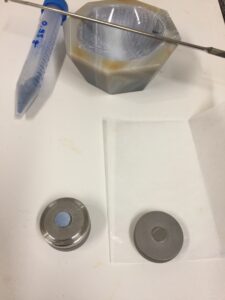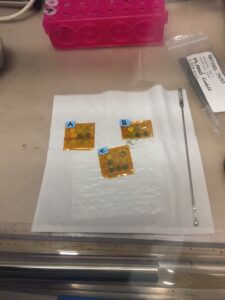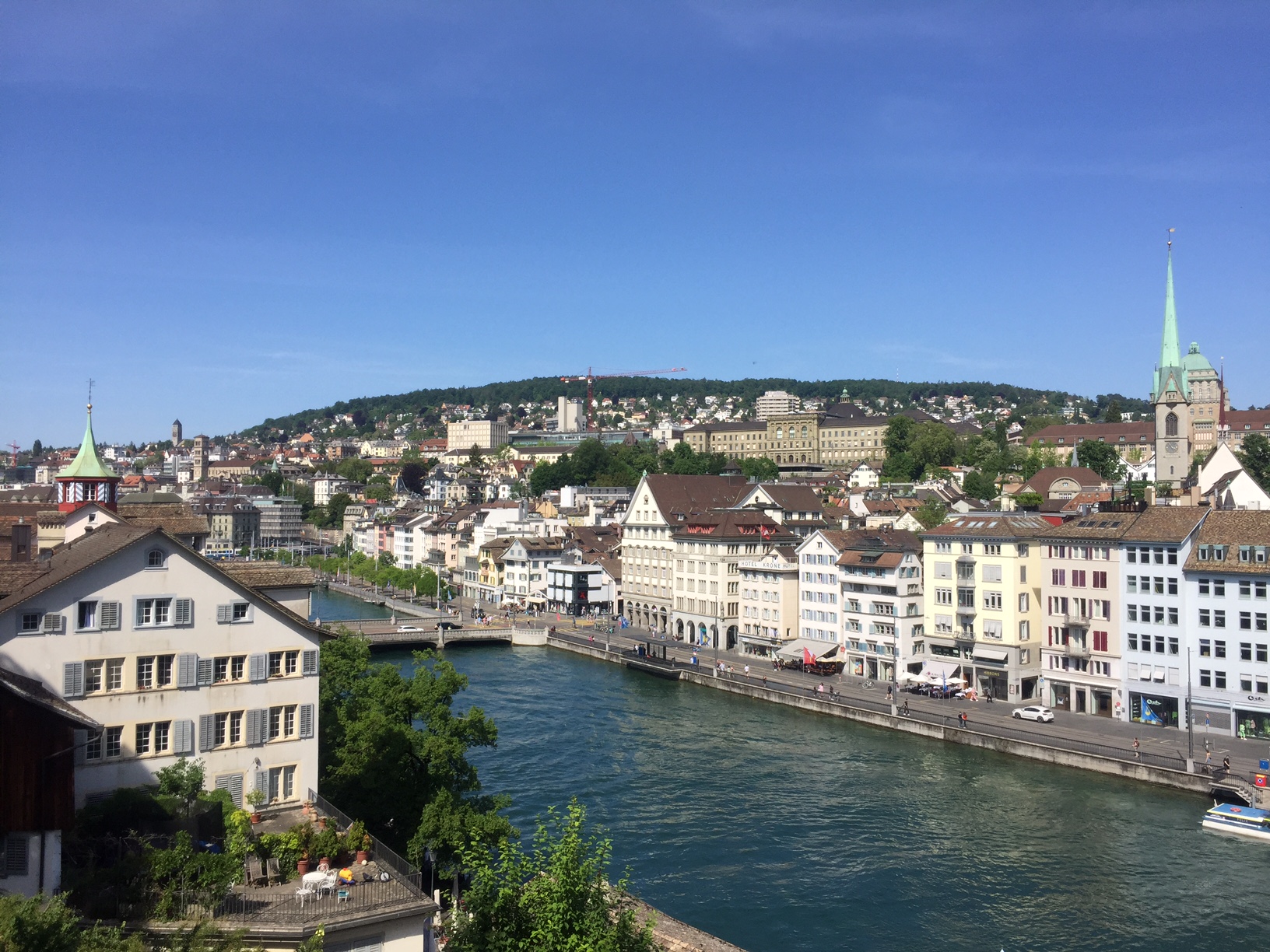Blogs
Finding substitutes
Hi, I’m Rouven and in this blog I report about my second secondment at the research institute eawag by Zurich, Switzerland.
Before the stay?
The secondment started already way before the actual stay, back home at the university of Vienna. We tried to synthesize vivianite (a phosphate mineral I’m working with) this time not as a pure mineral but with substitutions. Substitutions in a mineral correspond to elements, which do not originally belong into the crystal structure, and replace in our case Fe or P to some degree. We did that to learn more about the properties of vivianite, specifically on how substitutions might change the reactivity (or more precise: the oxidation and the dissolution kinetics) of the mineral. The background is that vivianite is a metastable mineral under atmospheric conditions, where oxygen is present. The oxygen reacts with the iron of the mineral and changes its redox state to a more oxidized state. In my previous studies I could show that this reaction has a huge effect on the dissolution of the mineral. So, we came up with the idea to substitute some iron of vivianite with another element.
However, this substitution process might seem to be fairly simple, and actually our method worked out well. But the real problem started with verifying that the substitution indeed took place. We had to exclude the possibility that we just formed another mineral. This means that instead of having the substituted vivianite we would have two different minerals – a pure vivianite and second mineral consisting only of the substitution elements. It is quite tricky to figure out this problem, so we had to ask some experts for their advice on how to do specific measurements and analyses. Especially, since we were not only interested if there is substitution but also at which specific position in the crystal structure the substitution took place.
P-Trap helps!
Luckily, we found these experts in our P-Trap consortium at the eawag, located in Zurich Switzerland. With the P-Trap members Andreas Voegelin and Ville Nenonen (ESR7) we discussed the best way of how to prepare and measure our vivianite samples. We used a measuring method called “XAS” (X-ray absorption spectroscopy). XAS is a method where you need a huge machine for, a so called “synchrotron” or maybe better known as “particle accelerator”. Electrons get hereby circled around in a huge magnet ring to almost light speed. When these electrons get deflected by a magnet, they emit an electromagnetic radiation called “bremsstrahlung” and that’s what we use for our measurements. This radiation has some special properties and it enable us to characterize our samples very well e.g. by determining the redox state or the local coordination of an element in our sample. So, it suited perfectly for our purpose.
But first we had to prepare the samples…
After synthesizing our substituted vivianites we had to prepare the samples for the XAS measurements. Therefor we ground and homogenized our samples, pressed small pellets, fixed them in a sample holder, sealed them and finally gave them to Andreas and Ville for the actual measurement.
 Preparation of XAS samples: vivianite pellet (blue) after grinding and homogenization |
 Preparation of XAS samples: Sealed XAS samples in sample holder, ready for shipment |
And then we had to wait…
Beamlines as the measuring points at a synchrotron are called, are very busy and one needs to apply for “beam time” already half-a-year or one year in advance, since there are so many people who would like to measure their samples there.
The Results arrived – time to go!
When the samples were finally measured it was time to start the actual secondment, meaning travelling to Zurich. The timing was perfect! Not only for the measurements, but also for afterwork activities, with best summer weather allowing us to take a swim in the “Limmat”.

Summer feeling in Zurich
The data one gets from XAS measurements are absorption spectra which look just like a wiggled line. To make any sense out of it, one needs to normalize and transform the data, compare the measured with reference spectra or model and fit the spectra. Thus, analyzing and understanding the data was the hardest part, especially since our data was not as conclusive as we had hoped for. But Andreas and Ville guided me all the way through.
But back to our initial research question: Did we mange to synthesize substituted vivianites?
YES! We did!
Our results could show that we indeed synthesized substituted vivianites with incorporations of other elements to various degrees. However, this is not the end of our research, but rather the beginning! Now we can use this material to perform a lot of different experiments to test for the reactivity of our substituted vivianites and compare these results to the pure material.
Visiting Zurich was a great experience and I’m already looking forward to my next and last secondment in Wageningen, Netherlands.
 |
 |

